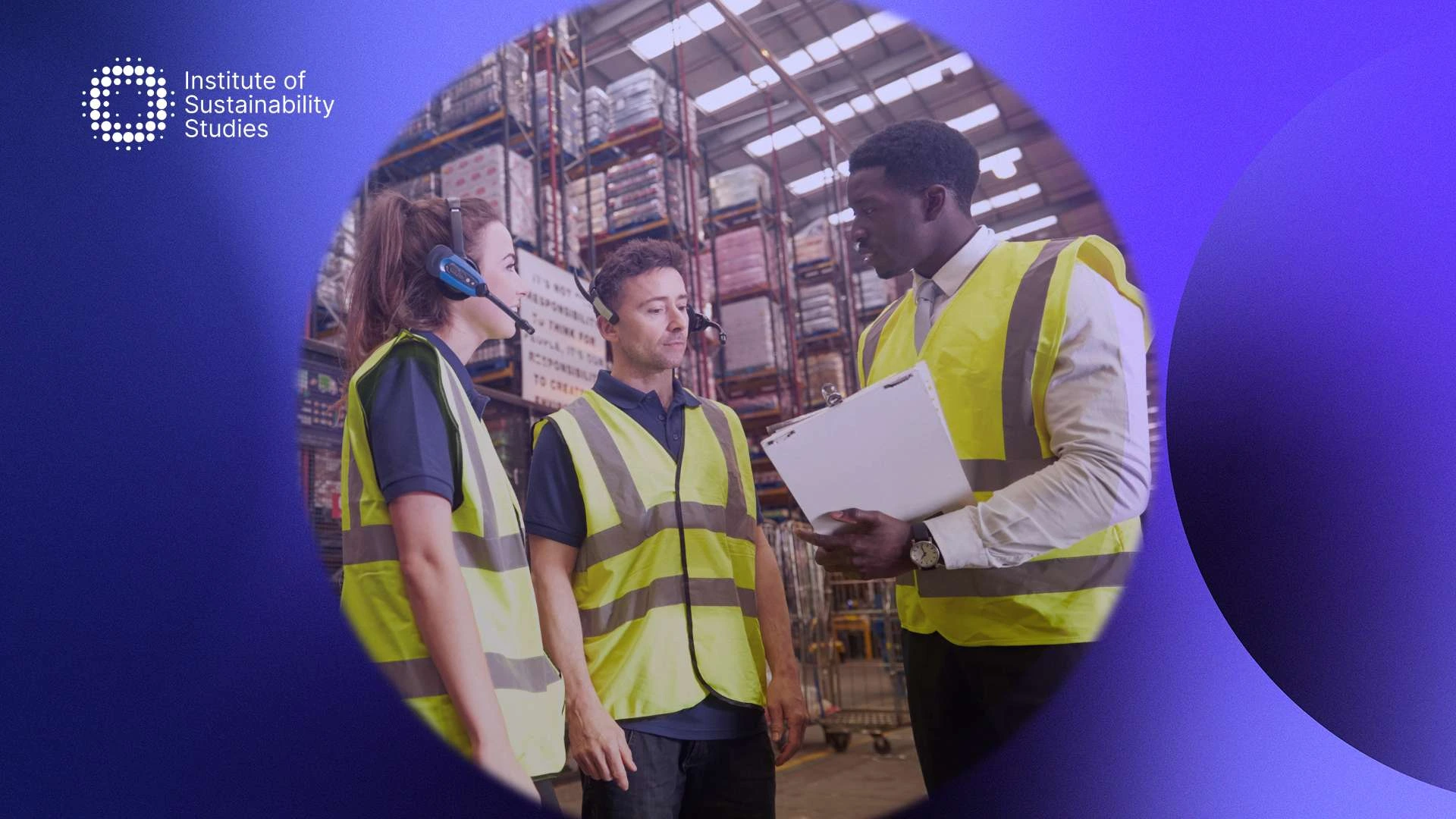For those who are unaware, adaptation planning is a process of adjustment to climate change impacts. This can include taking opportunities to become more sustainable or actions to reduce the negative impacts of the climate crisis.
Ultimately, for businesses, adaptation planning is a form of risk management and a crucial aspect of business sustainability. While we are taking action to slow the rate of climate change, it is still important to prepare for and respond to the effects it will have on economies and societies worldwide.
Additionally, the climate is constantly warming, which means the opportunity window to mitigate its effects is getting smaller. Continue reading to learn how SMEs can best adapt to the changing climate.
What is climate change adaptation planning?
Climate change adaptation involves actions that enable us to continue to meet our basic needs by adjusting to the expected or ongoing climatic changes. It involves various decision-makers, and their choices help to lessen the adverse effects of climate change and make the most out of the situation. Adaptation may sound like a giving-up approach, but it is actually vital to the well-being of all species including humans living on Earth.
The impact of climate change on businesses
The impacts of climate change will be felt across all industries. Climate change is not only transforming the way we live but the way we work too. According to the UN’s International Labour Organization, a total of 80 million jobs would be impacted if temperatures rise to extreme levels.
Some of the risks from climate change include physical risks like droughts, wildfires, floods, and hurricanes. These weather disasters can cause physical damage to transport links and property. Not to mention, they put people’s lives at risk too. These weather events have only become more common as the climate has continued to warm.
Some of these events have already impacted several industries worldwide. For example, the agricultural sector and the leisure industry. Australia, the USA, and Turkey have all lost tourism income as a result of prolonged wildfires. Another hindrance that can arise from the climate crisis is transitional risks. These risks come from changes in consumer trends and technologies.
As more businesses place a halt on activities that contribute to the climate crisis, they risk being left with stranded assets whose value deteriorates. Two sectors in particular that are open to transitional risks are the energy industry and the mining sector. Profits will no doubt be down for both sectors with adaptation, and there is also a reputational risk here.
Climate change is also a mental health concern. The increase in weather anomalies associated with climate change is impacting people’s mental well-being across the globe. In other words, businesses often take a major hit because employees struggle with their mental health. They could experience declines in efficiency, higher levels of stress, and decreased productivity.
The capacity of SMEs to adapt to climate change
Those are just some of the impacts of climate change on businesses globally. They show why it is so important that businesses adopt sustainable action plans. Adapting to climate change is not just about impressing customers; it is also good for business. Businesses, in particular SMEs, have an important role to play in enabling appropriate, effective, and timely adaptation.
They know the risks climate change poses to their operations, employees, customers, suppliers, and society. As a result, businesses have started to recognise opportunities to increase their market share and expand their operations by creating climate-resilient services and products to help businesses, governments, and people adapt.
Business contributions to climate change adaptation are vital in supporting efforts to build a green economy and sustainable development. It also promotes a company’s competitive edge, viability, and profitability. A number of global market-leading organisations have already begun to assess climate change opportunities and risks to implement adaptation measures.
In saying that, SMEs have less ability than other businesses to deal with climate change since they have a lack of resources. In saying that, they can still pave the way for adapting to climate change across economic sectors. For example, SMEs in South-East Asia have proven to be the backbone of Asian economies, playing a pivotal role in fighting climate change in the region.
According to UNFCCC, SMEs account for around 97 percent of all enterprises. Therefore, involving them to address climate change is important for numerous reasons. Namely, for the planet, the companies’ self-interest to increase resilience and become future-proof and to protect their operations and supply chains.
In the current economic climate, SMEs are less likely to be able to take the steps necessary to adapt to climate change. Businesses are typically less aware of the potential opportunities and risks of climate change, the support available, and how to take adequate action. Due to this, SMEs are generally difficult to engage and respond best to tailored advice and information from trusted sources that are free of charge.
Existing support and advice available to businesses on climate change adaptation planning
As mentioned throughout this article, adaptation is good for business. At the recent COP27, the Sharm-El-Sheikh Adaptation Agenda was launched. This was the first-ever comprehensive worldwide action plan encouraging governments and non-state actions to get behind the 30 adaptation goals to build a more resilient role by 2030. The framework recognises adaptation is an important part in the fight against climate change.
It signals a growing expectation that businesses, as well as other actors, must take action to the acute hazards currently facing us. Adaptation is then thought to spur the expansion of industries and support security and prosperity for billions of people. In order to get involved in this area of climate action, businesses should create an adaptation plan.
To get started, companies should assess their climate risks. From this point, they will be able to build resilience. What this means is studying the risks within your supply chain, prioritising areas for adaptation, identifying risk hotspots, and supporting stakeholders in their supply chains by giving them financial support and the technical skills they require to adapt.
For example, some businesses are building resilience by developing early warning systems to alert them of weather events so they can better protect themselves. After you have done a climate risk analysis, you should capitalise on opportunities. Begin to flex your skills in innovation and investment to create products and services that help societies live more sustainably in the new climate-resilient world.
This could include investing in R&D to scale new adaptation solutions and drive innovation. Collaboration is also another key component in successful adaptation. Therefore, there must be a good partnership between all areas of society. Businesses should, as a result, participate in multi-stakeholder efforts to encourage climate change adaptation.
This includes at a local level and further afield with industry players, agencies, and community leaders. Ultimately, there is so much guidance, support, and advice available to businesses to help them build their adaptation plans. Most of this support can be found online from your local city council. Here, you will also find financial support for organisations that are greening their businesses too.
The importance of adaptation planning for SMEs
The impacts of climate change represent a big challenge to the private sector, specifically that of small and medium-sized enterprises (SMEs). These businesses are drivers of economic growth, and if their viability is threatened, the complete economy will suffer.
If SMEs do not adapt and climate change continues to accelerate, it will result in declining economic growth and job losses. The impacts on business could be direct, like the disruption of production or damage to buildings. These impacts can also be indirect, which is why the need to adapt to climate change is so pressing.
Adaptation solutions come in various forms depending on the business. There is no one size fits all solution. Successful adaptation is important to protect your business, team, suppliers, and customers, as well as our home, the Earth. Adaptation planning enables us to prepare for the transforming conditions in the world. With climate change being so unpredictable, we can never underestimate the power of being ready.
In order to adapt successfully, you must create an adaptation plan for your business. This should include all of the risks climate change presents and the opportunities as a result. Once you have identified all of the potential risks, you should begin implementing strategies and practices that will climate-proof your systems.
Summary
In an ideal scenario, we would be able to curb our emissions, meet our climate targets, and mitigate climate change. However, climate change is already happening, and mitigation may not be enough. For that reason, we need to try our hardest to slow its progress and, similarly, adapt to its effects to better cope with the impacts.
Climate change will hit businesses hard, particularly SMEs. Due to this, it is necessary for these organisations to create adaptation plans. These plans should assess all potential climate risks and opportunities so that they can climate-proof their business and remain resilient.










